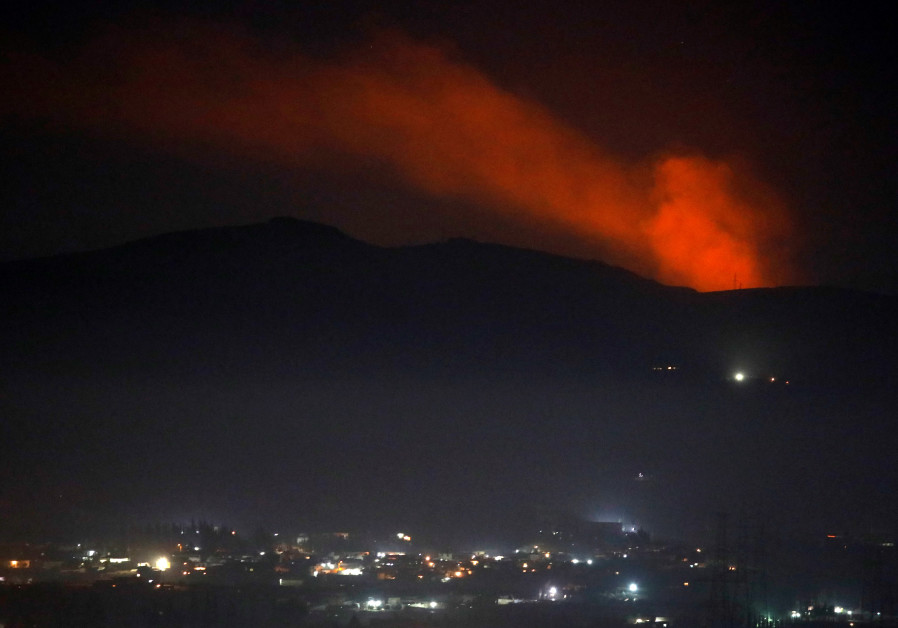Airstrikes and active air defense across Damascus into the mountains near Lebanon and near Homs 160 km to the north awoke Syrians after midnight in the first hours of Monday.

Airstrikes and active air defense across Damascus into the mountains near Lebanon and near Homs 160 km to the north awoke Syrians after midnight in the first hours of Monday. It was the largest series of airstrikes many had seen in months or years, according to social media accounts tweeting from Syria or in touch with people on the ground.
Houses were damaged, soldiers reported wounded and killed and in hospital, as well as civilian reported injured. Explosions rocked areas around Damascus, primarily to the west and into the mountains.
SANA state media says people were injured and homes damaged in Sahnaya near Damascus. But this is only one location and as the full picture emerges Syria’s regime and its allies in Tehran and Moscow will take notice. Over the years Syria has accused Israel of numerous airstrikes and Israel’s former Chief of Staff has said that more than 1,000 were carried out. However the larger picture is that the Syrian government must wonder what the message is.
Syria wants to put on a brave face, claiming that its air defense has downed incoming missiles. But in the past it has said the same and it has been shown that it cannot interdict airstrikes. Last fall Russia said it would provide the Syrian regime with the S-300 system. On Sunday images were released by ImageSat International showing four S-300 systems in Syria’s Masyaf area not far from Homs.
In addition a report at Ynet in May indicated that an airstrike at T-4 airbase on the road to Palmyra from Homs destroyed an Iranian 3rd Khordad air defense system that is supposed to be similar to the S-300. The two details matter for the Syrian regime because in both cases these relatively sophisticated air defense systems were either all sitting in the same place, and thus not deployed to protect all of Syria, or one was allegedly destroyed in T-4.
Syria knows that its Russian ally held a high level meeting with Israel in June with US National Security Advisor John Bolton and Israeli counterparts. Russia has stressed that it does not want Syria to become a battlefield for any foreign power against Iran. However Israel has said numerous times last year that it views the Iranian presence in Syria as a threat. US-Iran tensions are at an all-time high. US F-22 raptors were sent to the Persian Gulf this week in position to deal with any Iranian threat.
Reports now indicate that an Iranian-backed group used a drone from Iraq to attack a pipeline in Saudi Arabia in May. With each incident, whether rocket attacks near US troops in Iraq, Houthi attacks on Saudi Arabia, or the Iranian downing of the US Global Hawk drone in June, the tensions are rising. The complex airstrikes in Syria on June 1 are the latest in what appears to be a much larger regional message to Damascus and its allies. The Within Syria Blog says “super heavy losses today.” As news continues to emerge about targets in Damascus and Homs, spanning such a wide area, Syria’s regime will have to weigh what it has lost. At the same time the US and Russia will be watching closely.
As reported by The Jerusalem Post
